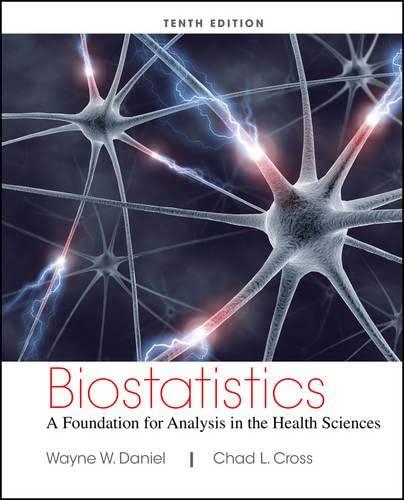Coughlin et al. (A-9) examined the breast and cervical screening practices of Hispanic and nonHispanic women in
Question:
Coughlin et al. (A-9) examined the breast and cervical screening practices of Hispanic and nonHispanic women in counties that approximate the U.S. southern border region. The study used data from the Behavioral Risk Factor Surveillance System surveys of adults age 18 years or older conducted in 1999 and 2000. The table below reports the number of observations of Hispanic and non-Hispanic women who had received a mammogram in the past 2 years cross-classified with marital status.
Marital Status Hispanic Non-Hispanic Total Currently Married 319 738 1057 Divorced or Separated 130 329 459 Widowed 88 402 490 Never Married or Living As an Unmarried Couple 41 95 136 Total 578 1564 2142 Source: Steven S. Coughlin, Robert J. Uhler, Thomas Richards, and Katherine M. Wilson, “Breast and Cervical Cancer Screening Practices Among Hispanic and Non-Hispanic Women Residing Near the United States–Mexico Border, 1999–2000,” Family and Community Health, 26 (2003), 130–139.
(a) We select at random a subject who had a mammogram. What is the probability that she is divorced or separated?
(b) We select at random a subject who had a mammogram and learn that she is Hispanic. With that information, what is the probability that she is married?
(c) We select at random a subject who had a mammogram. What is the probability that she is nonHispanic and divorced or separated?
(d) We select at random a subject who had a mammogram. What is the probability that she is Hispanic or she is widowed?
(e) We select at random a subject who had a mammogram. What is the probability that she is not married?
Step by Step Answer:

Biostatistics A Foundation For Analysis In The Health Sciences
ISBN: 9781118302798
10th Edition
Authors: Wayne W. Daniel, Chad L. Cross






